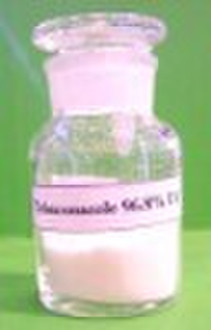Catalog
-
Catalog
- Agriculture
- Apparel
- Automobiles & Motorcycles
- Beauty & Personal Care
- Business Services
- Chemicals
- Construction & Real Estate
- Consumer Electronics
- Electrical Equipment & Supplies
- Electronic Components & Supplies
- Energy
- Environment
- Excess Inventory
- Fashion Accessories
- Food & Beverage
- Furniture
- Gifts & Crafts
- Hardware
- Health & Medical
- Home & Garden
- Home Appliances
- Lights & Lighting
- Luggage, Bags & Cases
- Machinery, Hardware & Tools
- Measurement & Analysis Instruments
- Mechanical Parts & Fabrication Services
- Minerals & Metallurgy
- Office & School Supplies
- Packaging & Printing
- Rubber & Plastics
- Security & Protection
- Service Equipment
- Shoes & Accessories
- Sports & Entertainment
- Telecommunications
- Textiles & Leather Products
- Timepieces, Jewelry, Eyewear
- Tools
- Toys & Hobbies
- Transportation
Filters
Search
Tebuconazole

Benjiamin Liu
Contact person
Basic Information
| Classification | Fungicide |
|---|---|
| CAS No. | 107534-96-3 |
| MF | C16H22ClN3O |
| Place of Origin | China (Mainland) |
| State | Powder |
Biochemistry: Steroid demethylation (ergosterol biosynthesis) inhibitor. Mode of action: Systemic fungicide with protective, curative, and eradicant action. Rapidly absorbed into the vegetative parts of the plant, with translocation principally acropetally. Uses: As a seed dressing, tebuconazole is effective against various smut and bunt diseases of cereals such as Tilletia spp., Ustilago spp., and Urocystis spp., also against Septoria nodorum (seed-borne), at 1-3 g/dt seed; and Sphacelotheca reiliana in maize, at 7.5 g/dt seed. As a spray, tebuconazole controls numerous pathogens in various crops including: rust species (Puccinia spp.) at 125-250 g/ha, powdery mildew (Erysiphe graminis) at 200-250 g/ha, scald (Rhynchosporium secalis) at 200-312 g/ha, Septoria spp. at 200-250 g/ha, Pyrenophora spp. at 200-312 g/ha, Cochliobolus sativus at 150-200 g/ha, and head scab (Fusarium spp.) at 188-250 g/ha, in cereals; leaf spots (Mycosphaerella spp.) at 125-250 g/ha, leaf rust (Puccinia arachidis) at 125 g/ha, and Sclerotium rolfsii at 200-250 g/ha, in peanuts; black leaf streak (Mycosphaerella fijiensis) at 100 g/ha, in bananas; stem rot (Sclerotinia sclerotiorum) at 250-375 g/ha, Alternaria spp. at 150-250 g/ha, stem canker (Leptosphaeria maculans) at 250 g/ha, and Pyrenopeziza brassicae at 125-250 g/ha, in oilseed rape; blister blight (Exobasidium vexans) at 25 g/ha, in tea; Phakopsora pachyrhizi at 100-150 g/ha, in soya beans; Monilinia spp. at 12.5-18.8 g/100 l, powdery mildew (Podosphaera leucotricha) at 10.0-12.5 g/100 l, Sphaerotheca pannosa at 12.5-18.8 g/100 l, scab (Venturia spp.) at 7.5-10.0 g/100 l, white rot in apples (Botryosphaeria dothidea) at 25 g/100 l, in pome and stone fruit; powdery mildew (Uncinula necator) at 100 g/ha, in grapevines; rust (Hemileia vastatrix) at 125-250 g/ha, berry spot disease (Cercospora coffeicola) at 188-250 g/ha, and American leaf disease (Mycena citricolor) at 125-188 g/ha, in coffee; white rot (Sclerotium cepivorum) at 250-375 g/ha, and purple blotch (Alternaria porri) at 125-250 g/ha, in bulb vegetables; leaf spot (Phaeoisariopsis griseola) at 250 g/ha, in beans; early blight (Alternaria solani) at 150-200 g/ha, in tomatoes and potatoes.
Payment term
Documents Against Payment
Letter of credit
-
Payment Methods
We accept:









